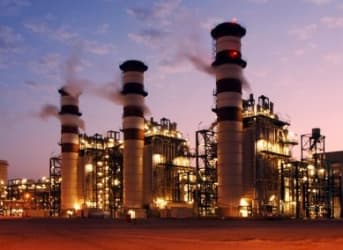That low oil prices are squeezing out oil sands producers is not breaking news. But in spite of a grim oil price outlook, production out of Calgary has continued to grow, defying both expectations and logic. The implications are serious, not just for the future of Canada’s energy industry and economy, but also North American energy relations.
In June 2015, the Canadian Association of Petroleum Producers (CAPP) revised down its 2030 production forecast to 5.3 million barrels per day (mbd). A year earlier the group predicted Canada would be able to produce 6.4 mbd by 2030. This is compared to the 3.7 mbd produced in 2014. Most experts agree that capital intensive oil sands projects are marginal – if not loss-making – in the $45 – $60 range. Yet production continues apace.
Of course, the nature of capital intensive operations such as the oil sands is that they are also prohibitively expensive to shut down. Producers are left in limbo, praying that prices will rise.
The implications for Canada should not be understated. Of the nation’s estimated 339 billion barrels of potential oil resources, oil sands account for around 90 percent. The Canadian dollar is at a decade low, which softens the blow for exporters in the short term but the long-term economic consequences are less rosy. Related: Is This The End Of The LNG Story?
Projects are being delayed, and many experts wonder if the current oil sands model has a future. Peter Tertzakian of ARC Financial told Alberta Oil Magazine that the era of oil sands mega projects was over.
In Alberta, an estimated one in 16 jobs is tied to the energy sector. According to the National Energy Board, crude oil and bitumen brought in $70 billion for Canada in 2014. Perhaps, as Tertzakian noted, new projects will simply adapt, becoming more nimble, flexible, and focused on value rather than quantity.
U.S. shale producers have found great success with this approach.
Oil sands companies are already feeling the effects of a weaker macroeconomic environment and volatile global oil market. In August, Moody’s Investor Service downgraded Canadian Oil Sands Ltd to Baa3, one step above a speculative rating. Canadian Oil Sands holds a 36.74 percent share in Syncrude, one of the most significant players in the oil sands space. The negative outlook reflects poorly on the industry as a whole.
But with Canada’s oil sands production still rising, where will all this oil go?
Currently, Canada sends 99 percent of its oil exports - 2.9 million barrels per day - to the United States. Much of this is headed to refineries in the North East and on the U.S. Gulf Coast. Related: Iran Enjoys Increased Oil Exports, U.S Shale Plays Face Structural Decline
The U.S. has been suffering its own oil glut as increased productivity and efficiency gains in shale production have kept many operators afloat. However, even in the United States, oil production is finally starting to decline.
One way to ease an oversupply in the U.S. - and make room for even more Canadian crude - would be to reverse the outdated crude oil export ban. Lifting the ban to allow the U.S. to export crude globally makes economic sense and advocates are garnering support from across the political spectrum. Still, the political maneuvering required means that any real movement is likely to be a medium-term prospect at best.
In the meantime, Canada’s major limiting factor going forward is its lack of pipeline infrastructure. The United States will continue to consume Canadian crude but the market will eventually be saturated. Canada is looking to expand into markets in Europe and Asia but has no efficient means of getting there.
The controversial Keystone XL pipeline has grabbed the headlines but it is only part of the picture. Even if the pipeline were approved, Canada’s oil sands production would rapidly exceed its capacity. Instead, Canada is looking to improve transport infrastructure at home.
The Energy East Pipeline aims to send 1.1 million barrels of oil from Alberta to refineries in eastern Canada but has faced opposition from several municipalities in Quebec, through which it would pass en route to Brunswick. Related: Midweek Sector Update: This Key OPEC Member Could Soon See Production Cuts
The Northern Gateway Pipeline would carry over 500,000 barrels per day to Kitimat in British Columbia but has likewise experienced backlash from affected communities and environmental groups.
With pipeline infrastructure moving slowly through regulatory processes, environmental impact studies, and community consultations, there are few alternatives in the interim. Canada continues to send crude by rail but the risks have been evidenced by a series of high-profile accidents in the last two years.
In the short-term, there may be no obvious relief for Canada’s oil sands producers. Further credit rating cuts may force operators’ hands. Oil sands production was always going to be a risky venture, even in a high oil price environment. Volatility will have a far more lingering effect on current and future production.
By Alexis Arthur for Oilprice.com
More Top Reads From Oilprice.com:
- EU’s Energy Market In For Some Drastic Changes
- Panasonic Now Gunning For Tesla’s Energy Storage Crown?
- The Shale Delusion: Why The Party’s Over For U.S. Tight Oil


















